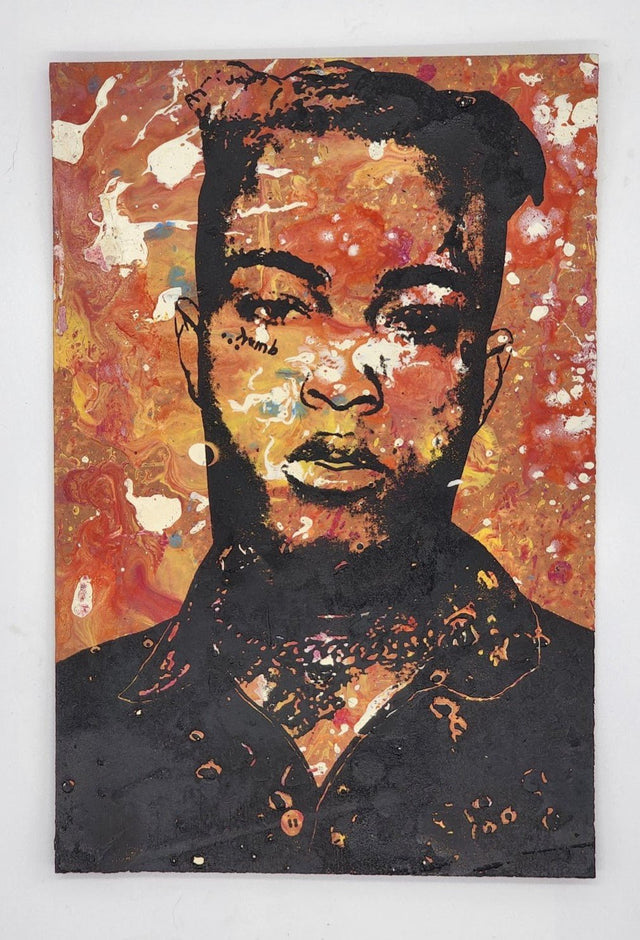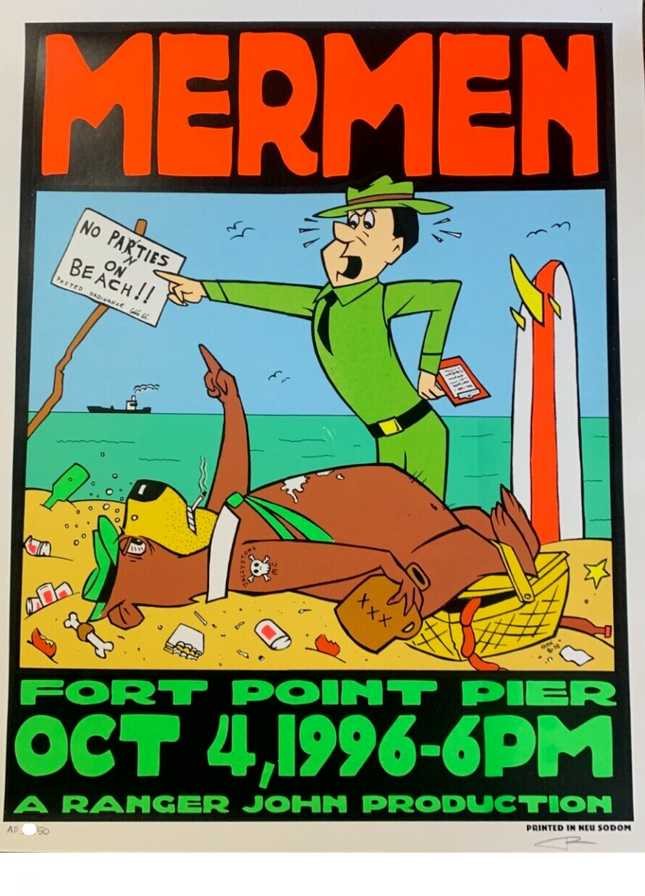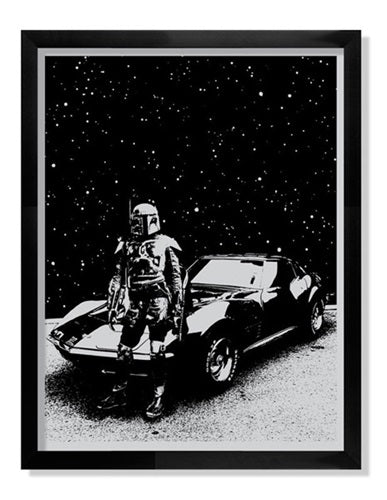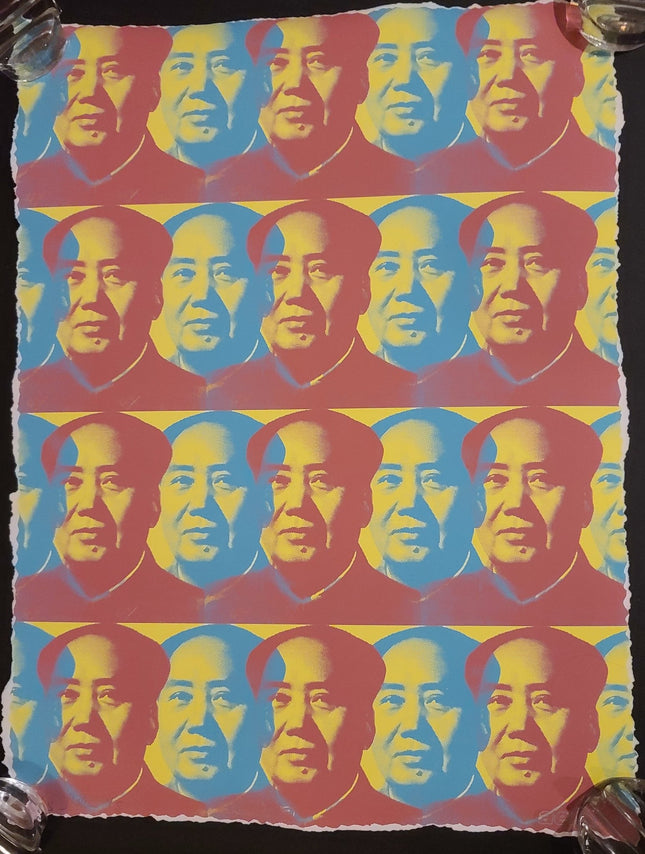
Man Male
-

Frank Kozik The Mermen AP 1996 San Francisco CA Silkscreen Print by Frank Kozik
The Mermen AP 1996 San Francisco CA Silkscreen Print by Frank Kozik Hand-Pulled on Fine Art Paper Limited Edition Pop Street Art Artwork. AP Artist Proof 1996 Signed by Kozik & Numbered Limited Edition of AP 50 Artwork Size 17.5x22 Silkscreen Print Band Gig Poster by Frank Kozik. The Mermen AP 1996 San Francisco CA Silkscreen Print by Frank Kozik Fort Point Pier The Mermen AP 1996 San Francisco, CA silkscreen print is a symbolic piece by the acclaimed artist Frank Kozik, whose work is often associated with the vibrant energy of pop and street art. Kozik's distinctive style is characterized by a blend of bold colors, cartoon-like figures, and a touch of satirical humor, all of which are palpably present in this artwork. This piece, crafted explicitly as a gig poster for a performance at Fort Point Pier on October 4, 1996, captures the essence of the San Francisco music scene of the time. Hand-pulled on fine art paper, the print is part of an exclusive Artist Proof (AP) edition, limited to 50 signed and numbered pieces. Measuring 17.5x22 inches, it's a significant work that embodies the culture and vibrancy of its era. Kozik's use of the silkscreen technique lends the piece a tactile quality that is often lost in digital reproduction, giving each print a unique texture and depth. The imagery in this particular print, featuring a park ranger character brandishing a sign that protests against beach parties, flanked by an unconscious figure surrounded by litter, serves as a witty commentary on environmental conservation and personal responsibility. This reflects Kozik's knack for engaging with social and cultural themes through his art, a trait he shares with many street artists who use public spaces to comment on societal issues. Kozik's work has been instrumental in defining the visual landscape of music culture in the 1990s, with his posters becoming synonymous with the era's underground music scene. The Mermen AP print is not just a piece of memorabilia but also a slice of pop culture history, encapsulating the intersection of music, art, and social commentary. Its existence as a limited edition work heightens its collectibility. It serves to preserve a moment when street art aesthetics infiltrated mainstream visual culture, thereby solidifying Kozik's legacy within the art community.
$516.00
-

Lil Tuffy Fett's Vette Silkscreen Print by Lil Tuffy
Fett's Vette Artwork Silkscreen Limited Edition Print on 100 lbs. Metallic Star Dream Cover Stock Paper by Pop Culture Graffiti Artist Lil Tuffy. Lil Tuffy - "Fett's Vette" 1 Color Screen Print Edition of 100 100 lbs. Metallic Star Dream Cover Stock 17.5" x 23"
$103.00
-

Aelhra Many Mao Green HPM Silkscreen Print by Aelhra
Many Mao Green HPM Limited Edition Hand Deckled 3-Color Hand-Pulled Silkscreen Print on Fine Art Paper by Aelhra Graffiti Street Artist Modern Pop Art. 2015 Signed & Numbered Limited Edition of 15 Artwork Size 18x24 #13/15 Hand Deckled Hand Painted Embleshed Multiple Print
$352.00
-

Lil Tuffy Han's Van Silkscreen Print by Lil Tuffy
Han's Van Artwork Silkscreen Limited Edition Print on 100 lbs. Metallic Star Dream Cover Stock Paper by Pop Culture Graffiti Artist Lil Tuffy. Lil Tuffy - "Han's Van" 1 Color Screen Print Edition of 100 100 lbs. Metallic Star Dream Cover Stock 17.5" x 23"
$103.00





